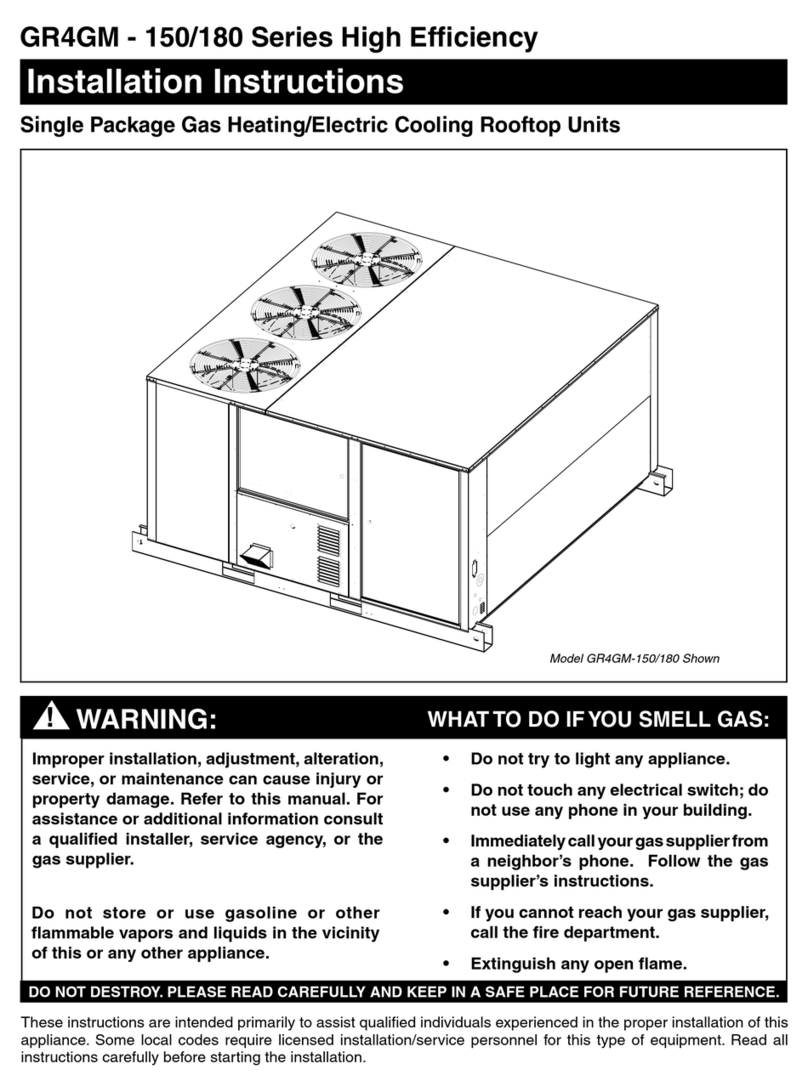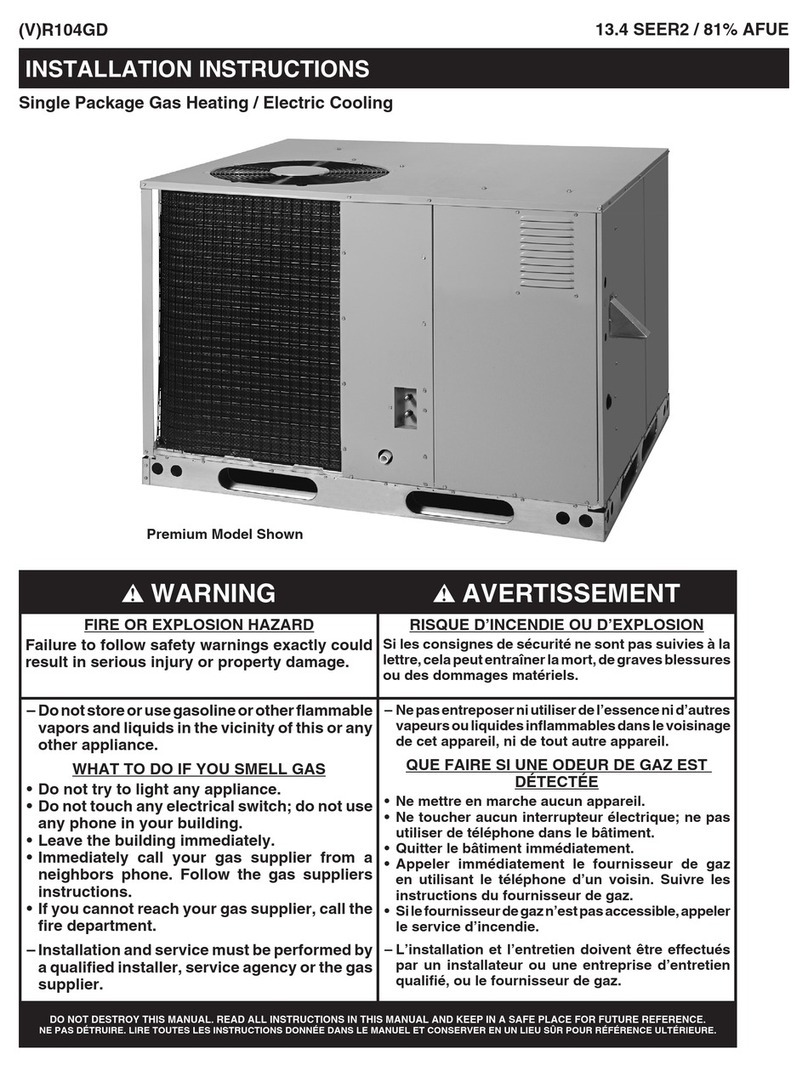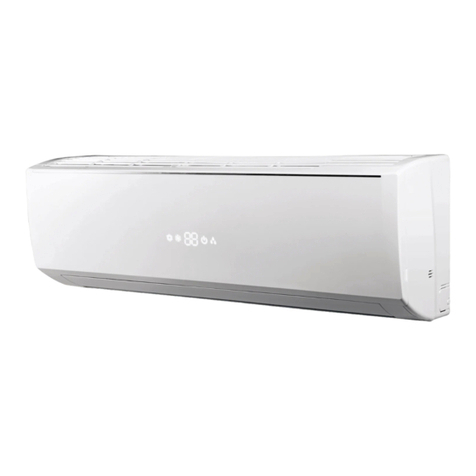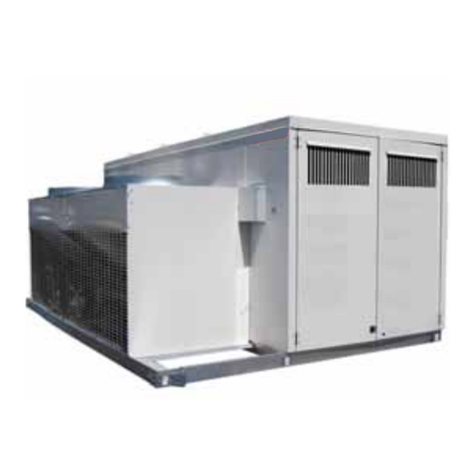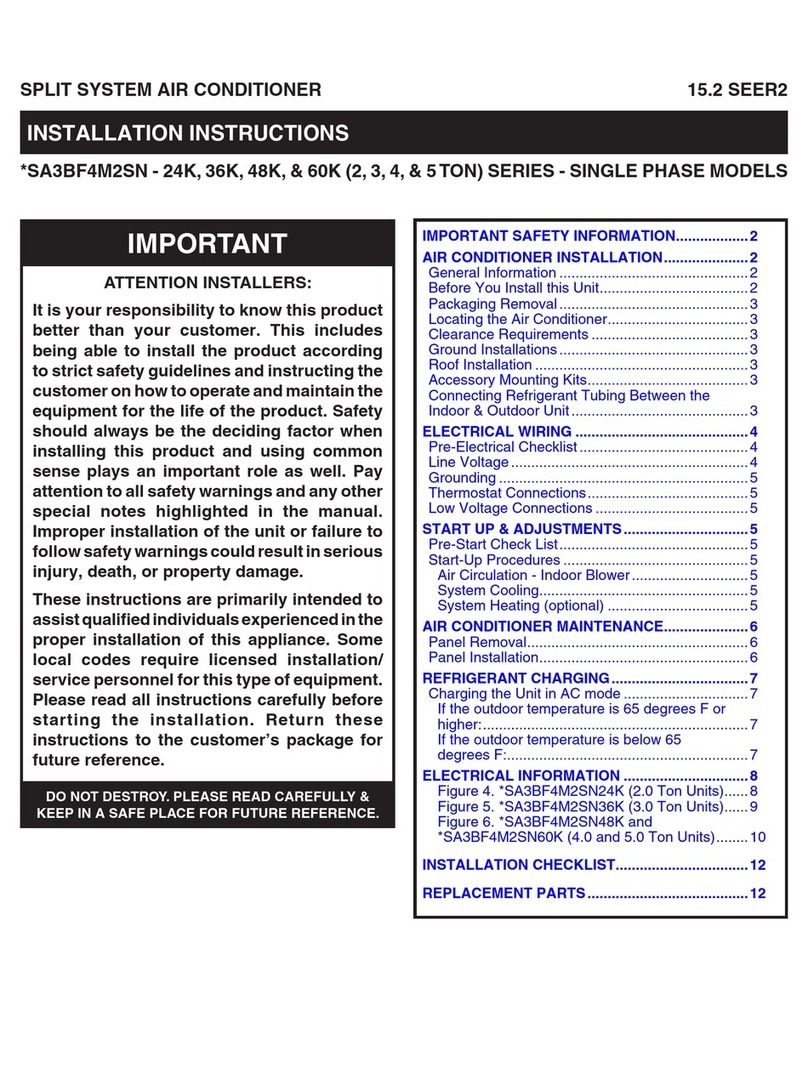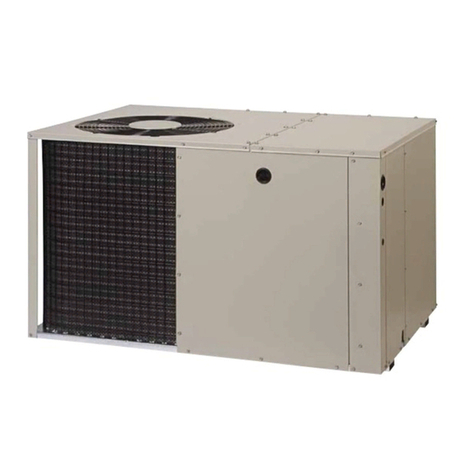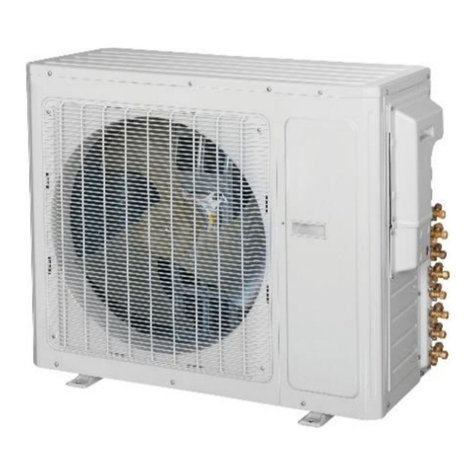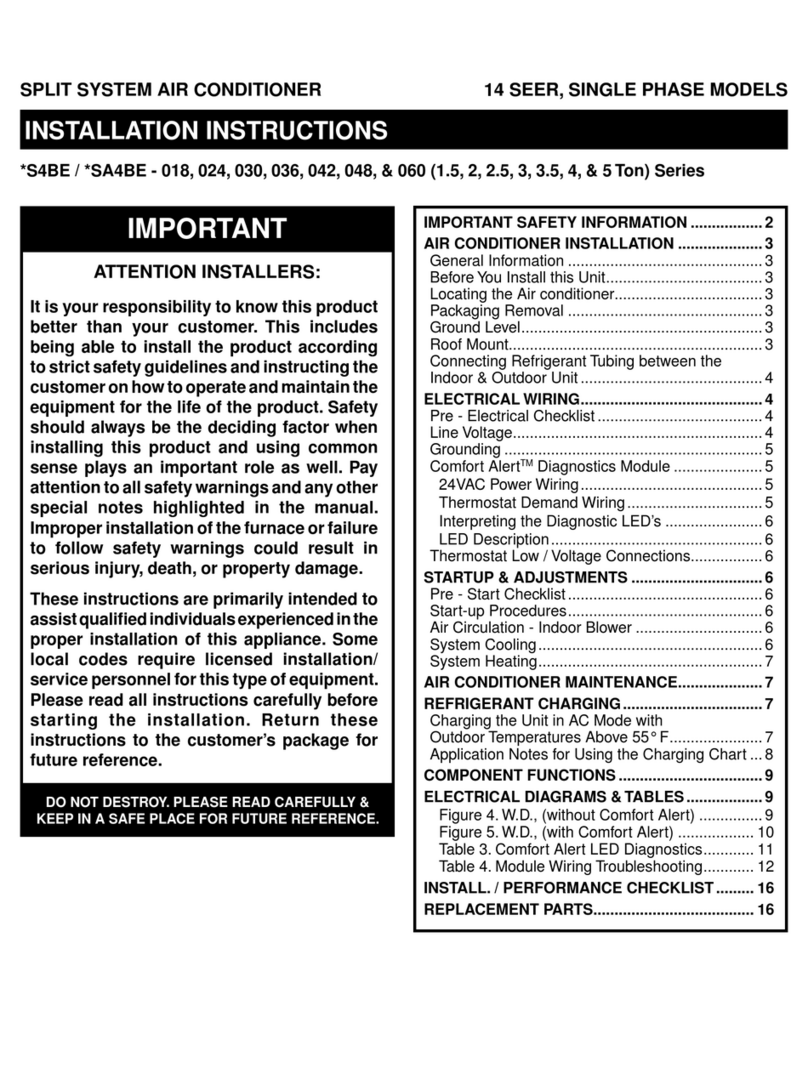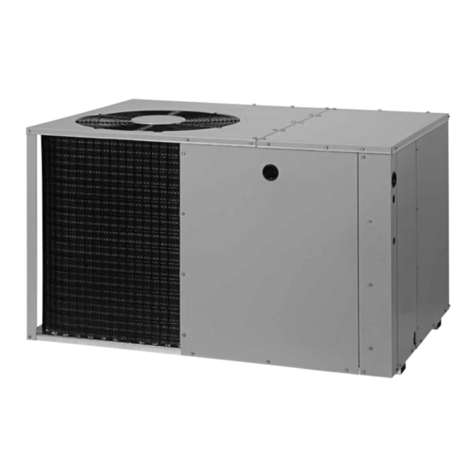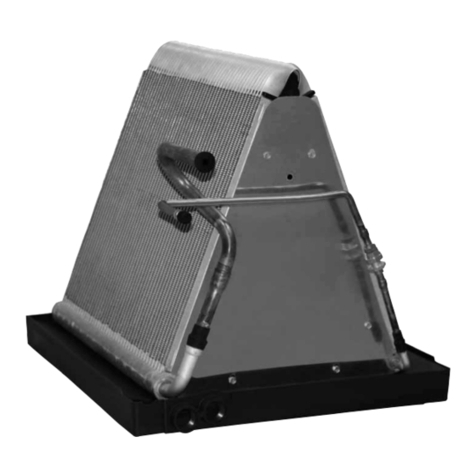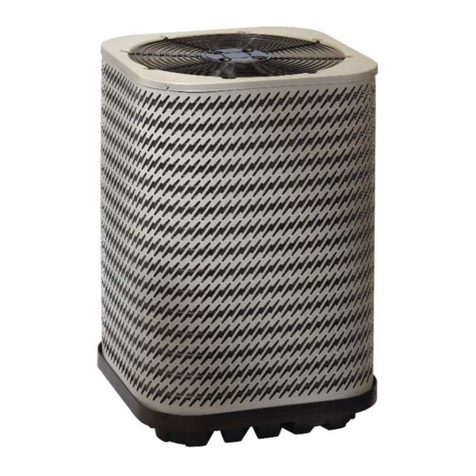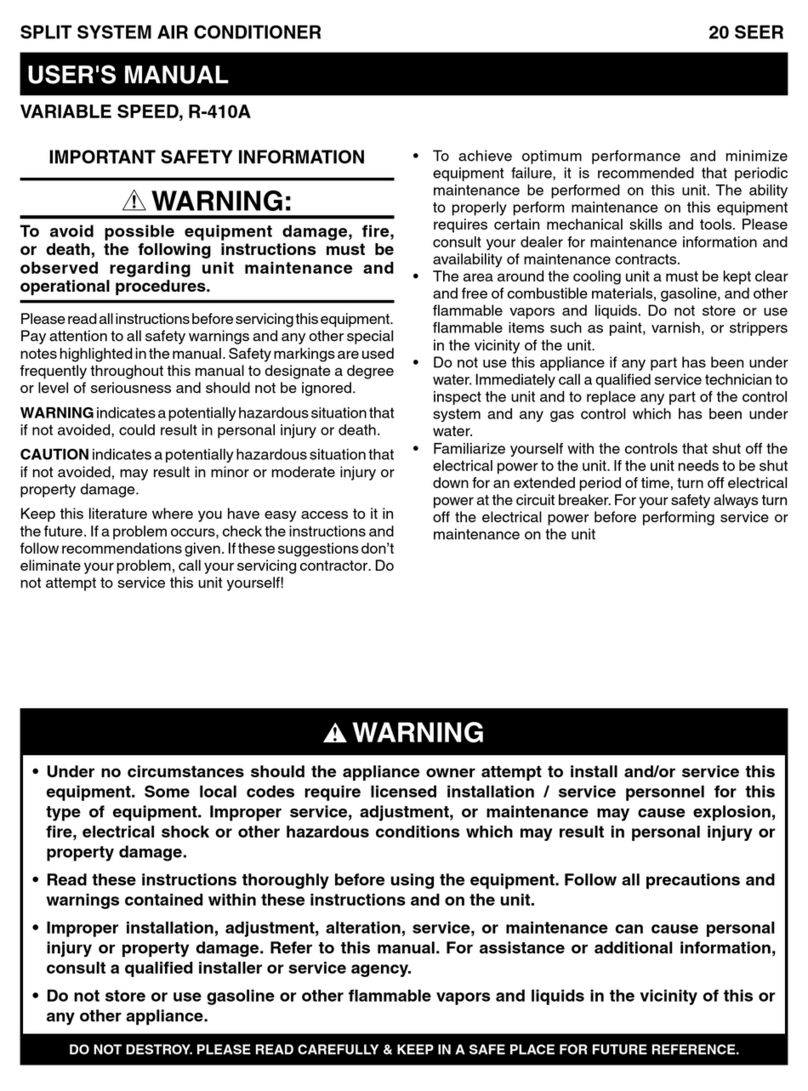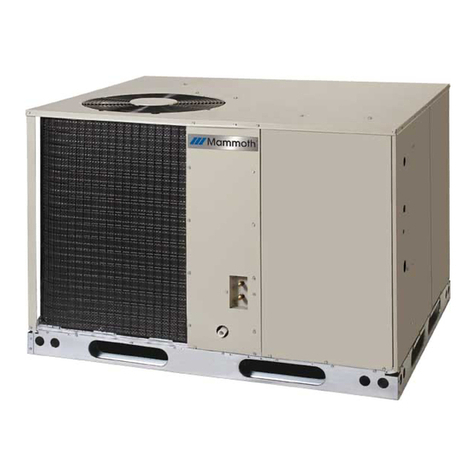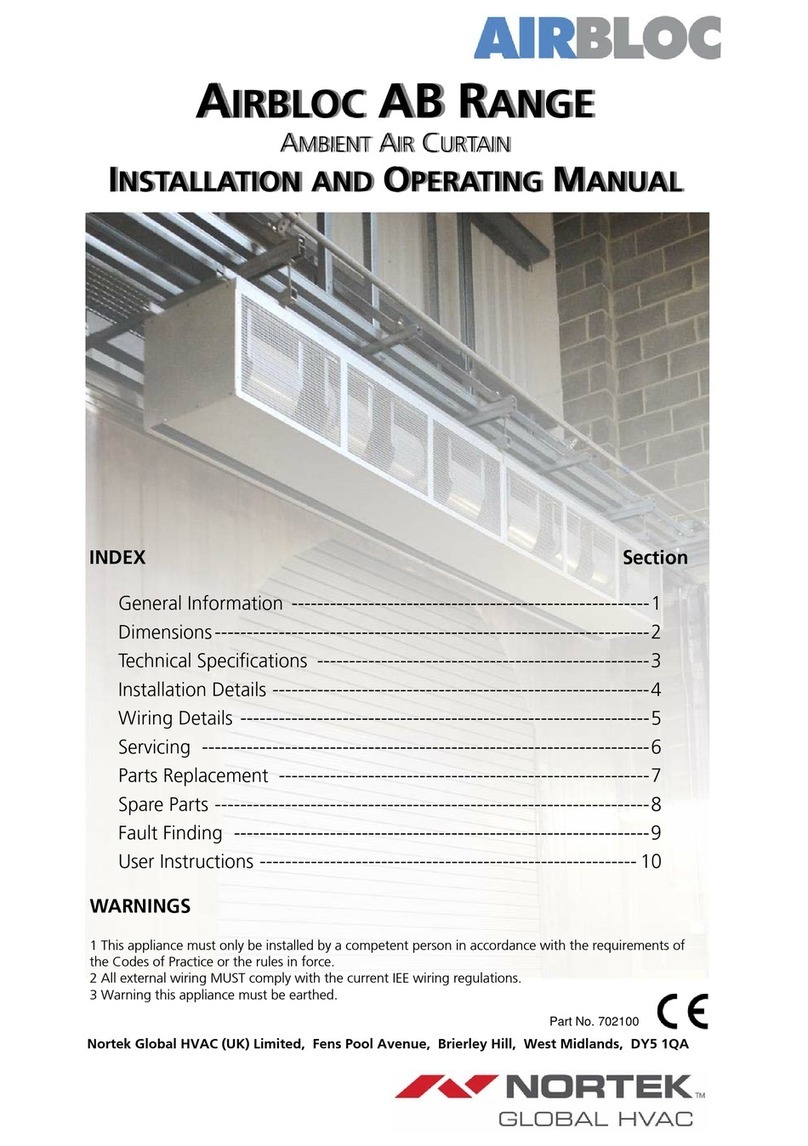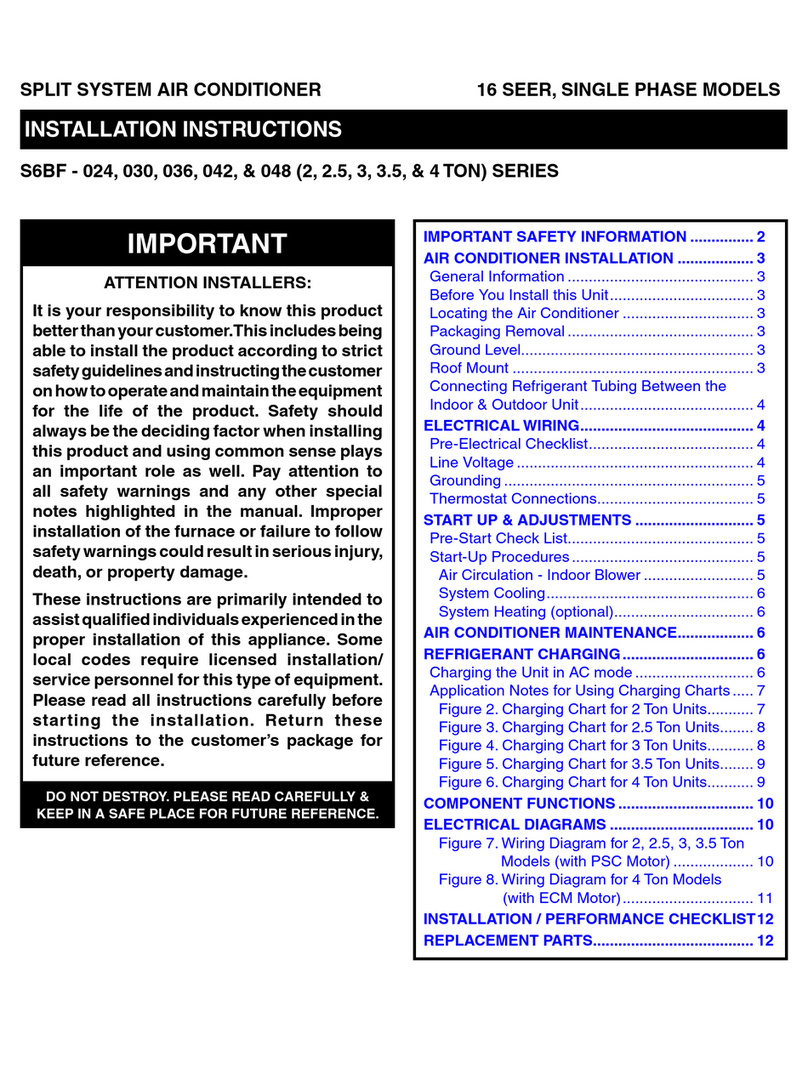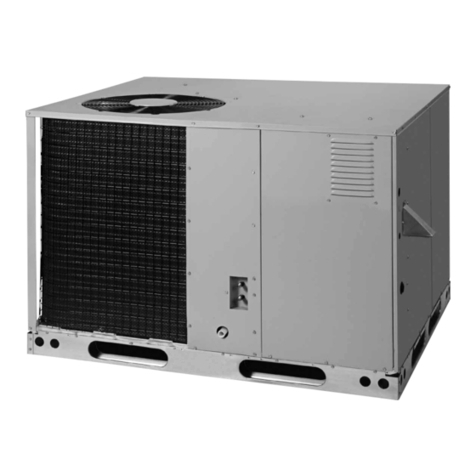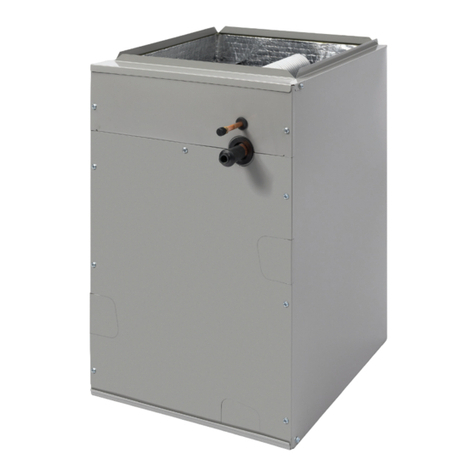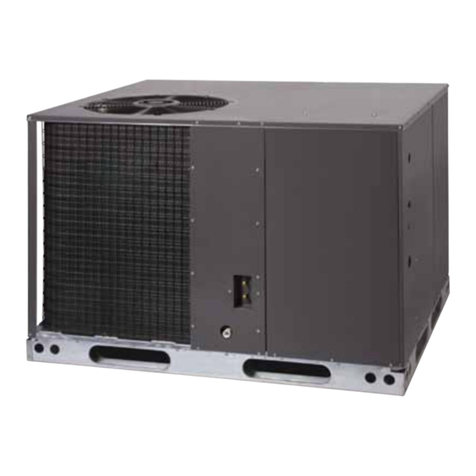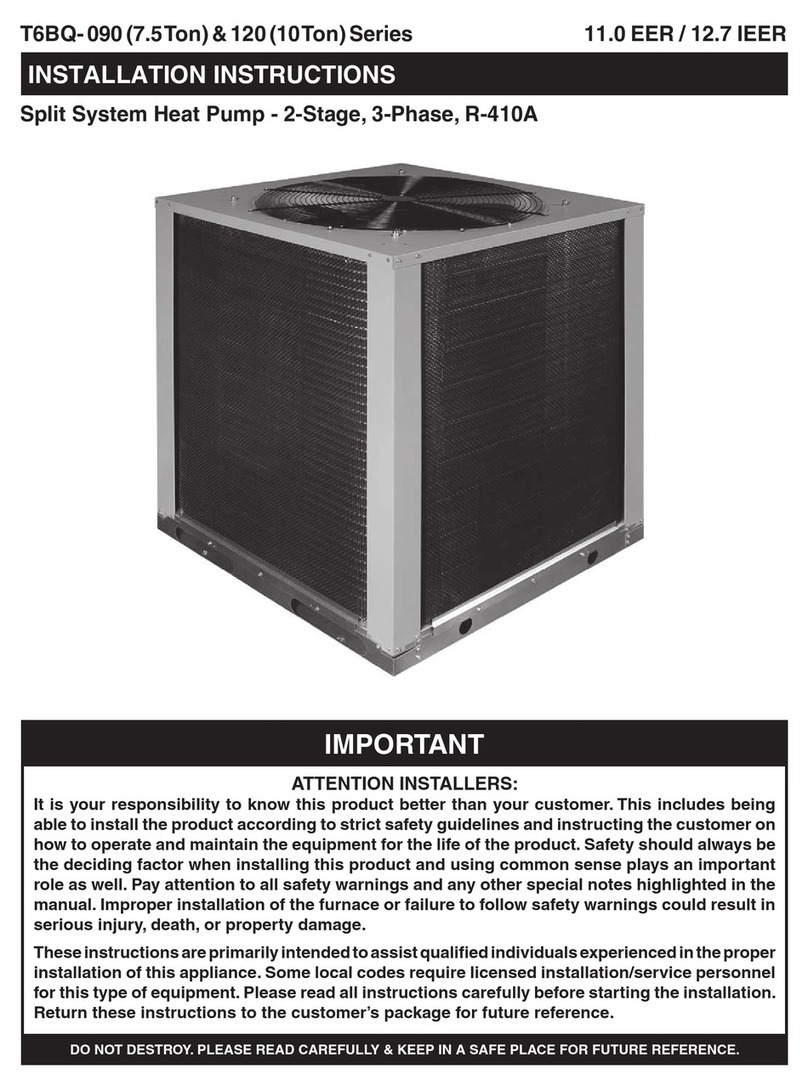
4
GENERAL INFORMATION
This packaged air conditioner is designed only for outdoor
ground level installations and can be readily connected to the
high static duct system of a home. This unit has been tested
for capacity and efficiency in accordance with AHRI Standards
and will provide many years of safe and dependable comfort,
providing it is properly installed and maintained. Abuse, improper
use, and/or improper maintenance can shorten the life of the
appliance and create unsafe hazards.
To achieveoptimumperformanceand minimizeequipment failure,
it is recommended that periodic maintenance be performed on
this unit. The ability to properly perform maintenance on this
equipment requires certain mechanical skills and tools.
Before You Install this Unit
√The cooling load of the area to be conditioned must be
calculated and a system of the proper capacity selected. It is
recommended that the area to be conditioned be completely
insulated and vapor sealed.
√Check the electrical supply and verify the power supply is
adequate for unit operation. If there is any question concerning
the power supply, contact the local power company.
√All units are securely packed at the time of shipment and
upon arrival should be carefully inspected for damage prior
to installing the equipment at the job site. Verify coil fins are
straight. If necessary, comb fins to remove flattened or bent
fins. Claims for damage (apparent or concealed) should be
filed immediately with the carrier.
√Please consult your dealer for maintenance information
and availability of maintenance contracts. Please read all
instructions before installing the unit.
Locating the Air Conditioner
• Survey the job site to determine the best location for mounting
the outdoor unit. Select a solid, level position, preferably on
a concrete slab, slightly above the grade level, and parallel
to the home. If possible, select a site for the unit that is as
close as possible to the proposed return grille location. Unit
dimensions are shown in Figure 10 & Table 9, (page 15).
DO NOT PLACE UNIT UNDER THE HOME.
• The unit should be located with consideration of minimizing
the length of the supply and return ducts. If practical, place
the air conditioner and its ducts in an area where they will be
shaded from the afternoon sun, when the heat load is greatest.
• The length of the supply and return ducts should be kept to
a minimum with no sharp radius bends.
• Overhead obstructions, poorly ventilated areas, and areas
subject to accumulation of debris should be avoided. The
hot condenser air must be discharged up and away from the
home, and if possible, in a direction with the prevailing wind.
Do not place the unit in a confined space. See Figure 10 &
Table 9, (page 15) for unit dimensions.
• Sufficient clearance for unobstructed airflow through the
outdoor coil must be maintained in order to achieve rated
performance.
• Consideration should also be given to availability of electric
power, service access, noise, and shade.
Minimum Clearance Requirements
Sufficient clearance for unobstructed airflow through the outdoor
coil must be maintained in order to provide room for proper
servicing and achieve rated performance. See Figure 1 for
minimum clearances to obstructions.
Service Access Clearance:
Blower and control access panels............................. 24”
Compressor compartment access panel................... 24”
Clearance from top of unit ........................................ 72”
Clearance around condenser coil area to
Wall or shrubs (excludes duct panel side)................. 12”
Clearances to Combustibles:
Combustible base - wood or Class A, B, or C
roof covering material ................................................ 0”
Supply & return air ducts ........................................... 0”
Duct connection side ................................................. 0”
Air Duct System
Air ducts must be installed in accordance with the standards of
the National Fire Protection Association “Standard for Installation
of Air Conditioning and Ventilation Systems” (NFPA 90A),
“Standard for Installation of Residence Type Warm Air Heating
and Air Conditioning Systems” (NFPA 90B), these instructions,
and all applicable codes. NFPA publications are available by
writing to: National Fire Protection Association, Batterymarch
Park, Quincy, ME 02269 or visit www.NFPA.org on the web.
• Design the duct work according to methods described by the
Air Conditioning Contractors of America (ACCA).
• The supply duct system, including the number and type of
registers, will have much more effect on the performance of
the system than any other factor. The duct must be sufficiently
large to conduct an adequate amount of air to each register.
See Figure 2 (page 5).
• Duct work should be attached directly to the unit flanges for
horizontal applications.
• For highly resistive duct systems it may be necessary to add
an additional return air duct and or supply to achieve maximum
performance and prevent coil icing and refrigerant flood back.
• The air conditioning output of the system will not cool
the home if air is lost to the outside through leaks in the
duct system. Ducts that are collapsed or restricted by
foreign objects will also prevent adequate air flow.
• All duct work passing through unconditioned space must
be properly insulated to minimize duct losses and prevent
condensation. Use insulation with an outer vapor barrier.
Refer to local codes for insulation material requirements.
24"
12"
24"
TOP OF UNIT
TO BE
UNOBSTRUCTED
0"
Figure 1. Minimum Unit Clearances
